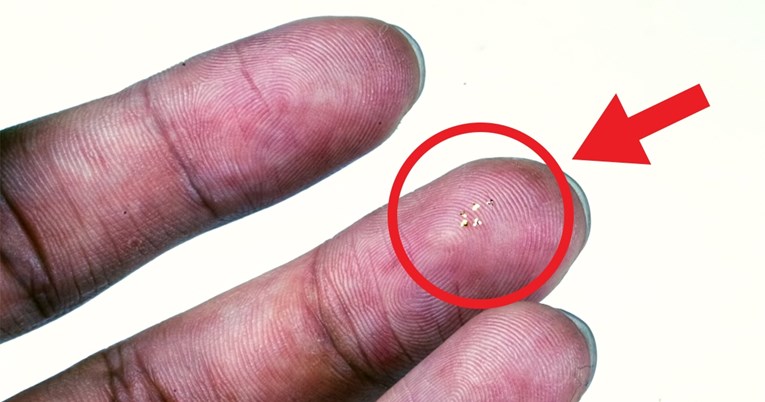VIDEO: Made the smallest flying structure, microchips with wings

Scientists have developed the smallest flying structure ever - a microchip slightly larger than a grain of sand that can fly. Although it can fly, when it completes a task, it disintegrates and disappears.
The authors of the device and the study, published in the journal Nature, point out in the introduction that miniature, wireless electronic devices can form the basis of future environmental and population monitoring systems, disease management, and other large-area applications.
Imitation of nature
In its design, the team was inspired by nature, with wings resembling the leaves of trees, such as linden or maple, which are designed for controlled flight without propulsion through natural environments or urban spaces.
Imitating the seed, the tiny microchip catches the wind and moves toward the ground in slow motion like a helicopter.
The microflares, designed by the team at Northwestern University in Illinois, can be equipped with ultra-miniature technology, including sensors, power supplies, wireless antennas and even built-in storage.
"Our goal was to add wing-wing flight to small electronic systems, with the idea that this would allow us to distribute highly functional, miniature electronic devices to register the environment for pollution monitoring, population monitoring or disease monitoring." said John Rodgers, who led the development of the new device.
Devices can have a number of uses
One of the team's ideas was to create devices that would stay in the air as long as possible to extend the time needed to collect the data they wanted. Like a microfly, the three-winged device falls through the air, interacting with the air, creating a steadily slow rotating motion.
"We think we have surpassed nature. At least in the narrow sense, we have been able to build falling structures with more stable trajectories and slower final velocities than the equivalent seeds we would see falling from plants or trees. "In addition, we were able to build these flying structures on helicopters in sizes much smaller than those found in nature."
He believes that their devices, among other things, could be sprayed en masse from high altitudes to monitor recovery efforts after the oil spill or to monitor the level of air pollution at various altitudes.
Ecological solution
The irony is that creating many such devices could potentially create new environmental contaminants with microchips. However, the authors in their work show that they are aware of the problem and offer solutions.
"Effective methods of using and disposing of such devices must be carefully considered. "One solution that bypasses such problems is devices made from materials that naturally blend into the environment by chemical reaction or physical decomposition into harmless end products."
Fortunately, Rodgers' lab is developing electronics that can be dissolved in water after being used for necessary research. Using such materials, he and his team try to build microflares that could eventually decompose and disappear into groundwater. Namely, reassembling a multitude of microfiber scattered around would be a virtually impossible mission.
Therefore, their production from degradable and environmentally friendly materials is the only real solution.
"We produce physically short-lived electronic systems made from biodegradable polymers, conductors, and soluble integrated circuit chips that, when exposed to water, naturally disappear into environmentally friendly end products," said Rodgers.


